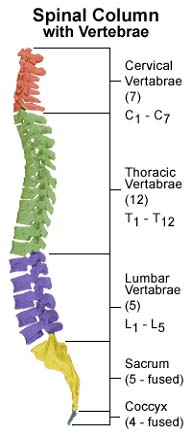Central pain syndrome is a neurological disorder caused by damage to the central nervous system, especially the spinal cord. Other and related names include:
Central pain syndrome occurs due to injury to central nervous system, stroke, multiple sclerosis, epilepsy, Parkinson’s disease, tumours and trauma to the brain or spinal cord. Central pain syndrome usually begins soon after the injury but sometimes it develops years later, especially if the damage is due to stroke.
Pain may be moderate to severe in intensity. Patients often describe a constant burning pain which increases by light touch. The pain is burning, aching, pressing, lacerating, tearing and mixed with excruciating shots.
There may be a loss of sensation, especially in the hands and feet.
Pain is aggravated by temperature changes - especially by cold weather. Other factors like exposure to sun, rain, snow, breeze, and touch by another person may also increase the pain.
Occasionally, there may be sharp bursts of pain feels like the pain caused by a dental probe on an exposed nerve.
The main goal of treatment is to reduce pain levels. Common analgesics are usually not helpful, but some anticonvulsant and antidepressant drugs can alleviate pain. Tricyclic antidepressants like nortriptyline and anticonvulsant medications like Gabapentin and Carbamazepine are often prescribed. Lowering stress levels also helps to decrease the pain.
Central pain syndrome requires long term medication as the pain is very disabling and debilitating. Although the disorder is not fatal, the patient usually suffers a lot.
An acute central cord syndrome, shown by disproportionately increased motor skills damage in the upper body compared to the lower body, problems with the bladder, and varying sensory loss below the injury.
When lesions affect the anterior part of the spinal cord and cut off blood, usually points out injury to the anterior artery. When this happens with spinal cord injury, it is thought to the a direct injury instead of a primary disruption of the artery. This is also called anterior spinal syndrome.
See also: Central Cord Syndrome

